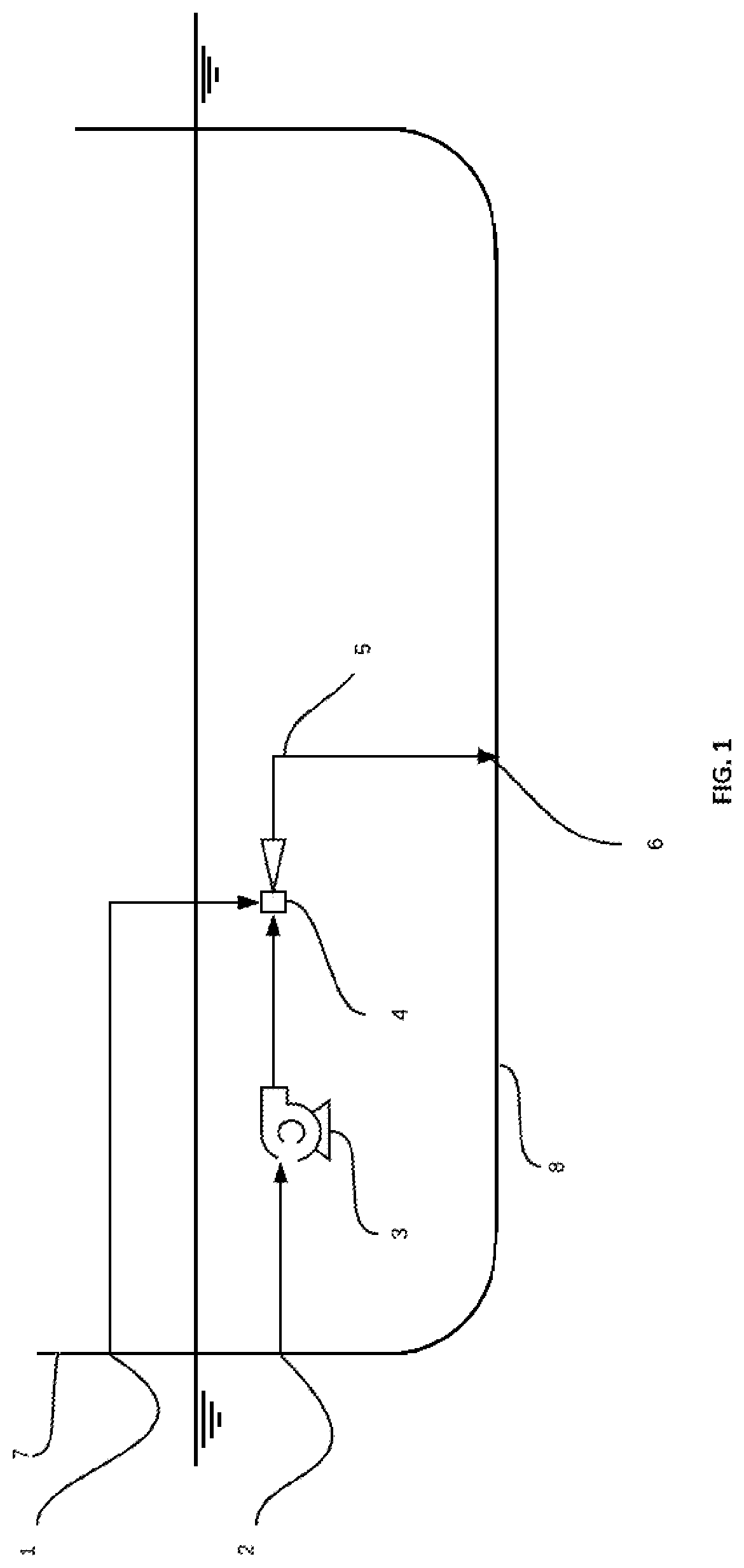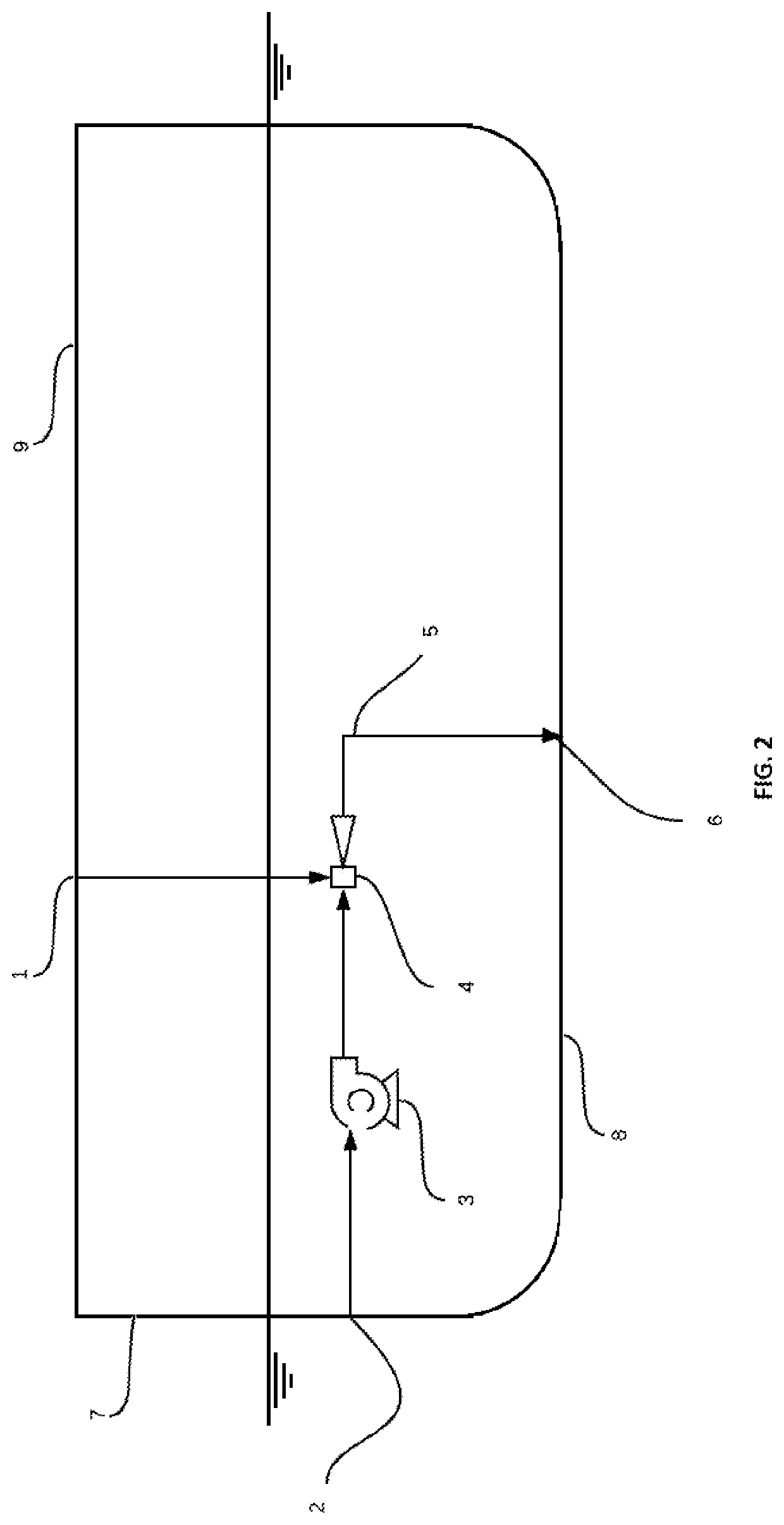Ship hull air microbubble lubrication system
a lubrication system and microbubble technology, applied in watercraft hull design, hulls, vessel construction, etc., can solve the problems of ballast water mainline modification to connect to venturi, wear on ballast water pumps, etc., to reduce frictional drag, reduce frictional drag on hull, and minimize ship structure modifications
- Summary
- Abstract
- Description
- Claims
- Application Information
AI Technical Summary
Benefits of technology
Problems solved by technology
Method used
Image
Examples
Embodiment Construction
[0027]By way of example, and referring to FIG. 1, one embodiment of the disclosure comprises a ejector air intake (1) penetrating the side of the ship hull (7) above the waterline and mechanically coupled to a ejector (4). The term “mechanically coupled” may include by way of example and without limitation, combined into a single component during the original equipment manufacturers (OEM) process, pipework, ducting, flanges, fasteners and any combination of mechanically coupled devices that convey air or water. The term “ejector” refers to any device utilizing venturi principles to create air microbubbles within water for example and without limitation educator and jet pump. The ejector water intake (2) penetrates the ship hull side (7) or ship hull bottom (8) below the waterline and mechanically coupled to a pump (3). The pump (3) is mechanically coupled to the ejector (4) where the pump (3) pressurizes the water from the ejector water intake (2) and causes the ejector (4) to draw ...
PUM
 Login to View More
Login to View More Abstract
Description
Claims
Application Information
 Login to View More
Login to View More - R&D
- Intellectual Property
- Life Sciences
- Materials
- Tech Scout
- Unparalleled Data Quality
- Higher Quality Content
- 60% Fewer Hallucinations
Browse by: Latest US Patents, China's latest patents, Technical Efficacy Thesaurus, Application Domain, Technology Topic, Popular Technical Reports.
© 2025 PatSnap. All rights reserved.Legal|Privacy policy|Modern Slavery Act Transparency Statement|Sitemap|About US| Contact US: help@patsnap.com


